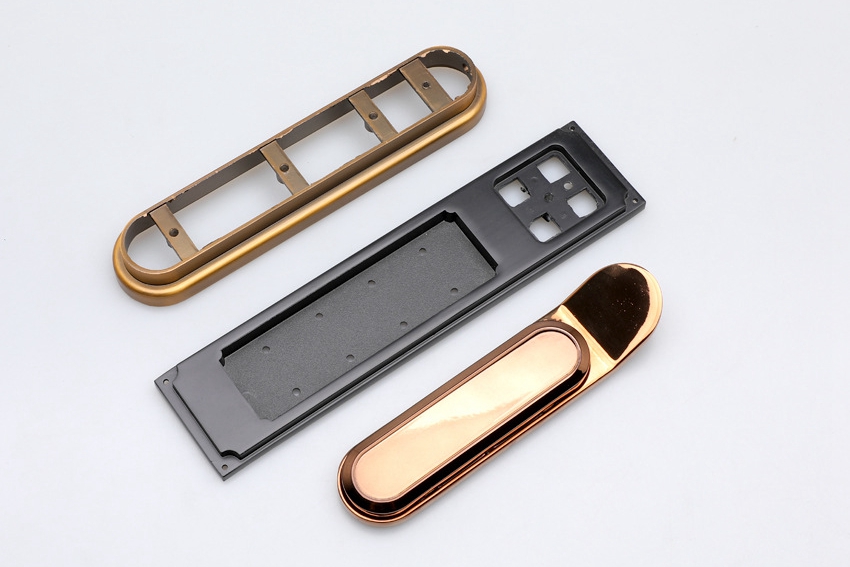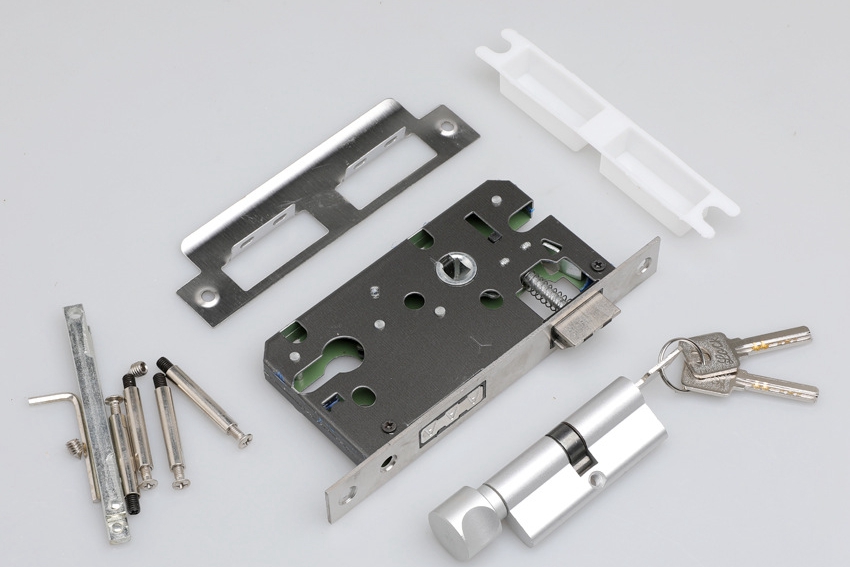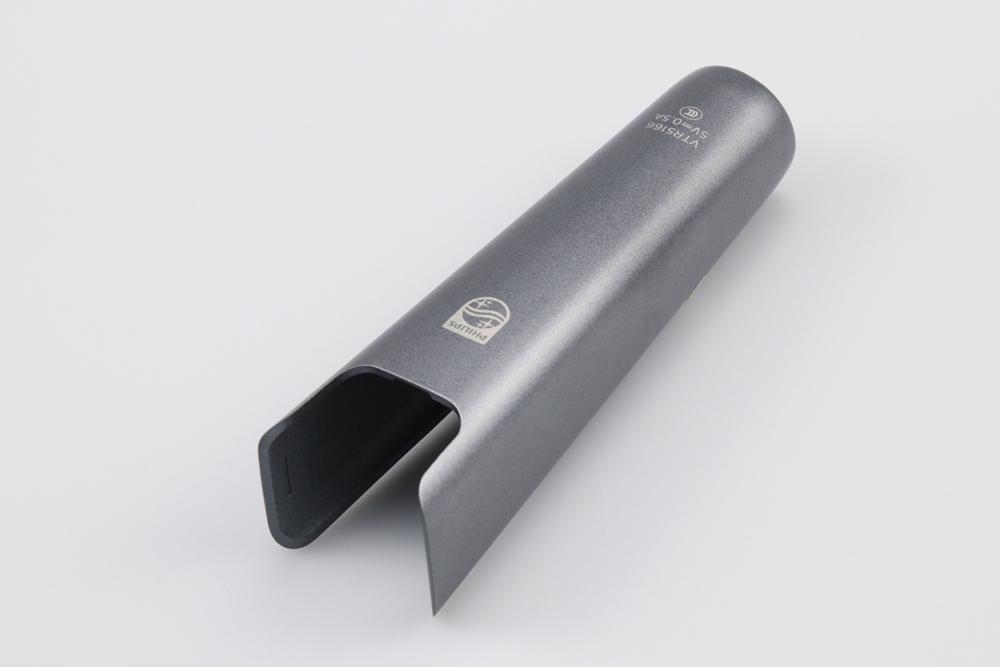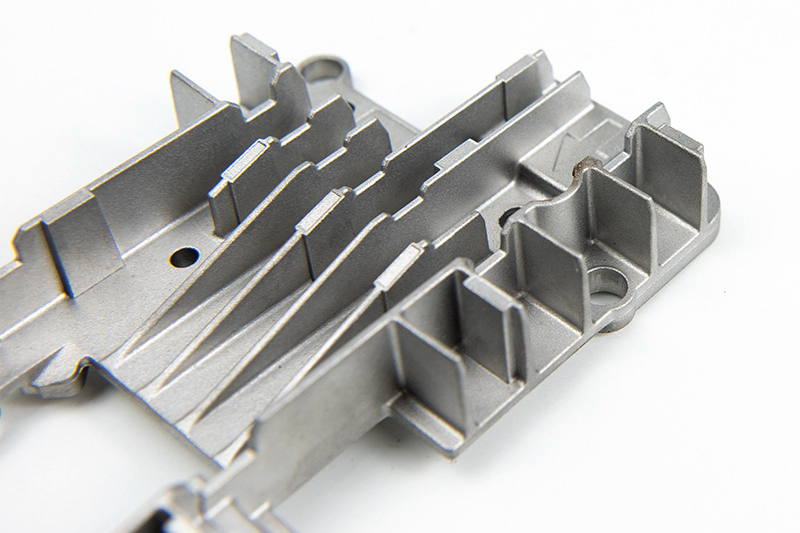Precision Lightweight Component Solutions for Lock Systems
In modern lock system design, lightweight and high precision have become irreversible core trends. From portable padlocks to smart door locks, the market demands lower weight, smaller size, and higher strength from locking products. As Neway’s engineering team, we understand that excellent lightweight design is not simply about reducing material, but about achieving the optimal balance between performance and weight through scientific process selection, material matching, and structural optimization. Precision lightweight lock components not only improve user experience and product portability, but also deliver dual benefits of material savings and performance enhancement through structural optimization.
Advanced Manufacturing Processes for Lightweight Precision Components
Metal Injection Molding (MIM): The Perfect Process for Complex Lightweight Small Components
Metal injection molding provides an ideal solution for the lightweight design of small and complex lock components. Metal Injection Molding (MIM) services enable one-step forming of precision parts with complex three-dimensional geometries, minimizing material usage while maintaining structural strength. This process is particularly suitable for producing key components such as lock cylinders, pins, micro gears, and transmission elements. The density of MIM parts can reach more than 95% of the theoretical value, with mechanical properties close to those of forged parts. Through MIM, we can integrate multiple traditional components into a single part, thereby reducing the number of assembly steps and decreasing the overall weight and size.
Aluminum Die Casting: Ideal Balance of High Strength and Low Weight
For larger components such as lock housings, panels, and structural frames, aluminum die casting offers an excellent lightweight solution. With a density of only about one-third that of steel, aluminum alloys enable the production of lightweight parts with uniform wall thickness and well-optimized structures through advanced die casting processes and tooling design. High-fluidity aluminum alloys can fully fill complex molds to form ribs, mounting bases, and other structural features, ensuring sufficient rigidity and strength while reducing material usage. Die-cast aluminum parts also feature superior surface quality, providing an ideal substrate for subsequent finishing.
Investment Casting: Structural Optimization for Weight Reduction
When lock components require special structural designs to achieve maximum lightweight performance, investment casting demonstrates unique advantages. This process enables designers to overcome conventional machining limitations and create optimized structures, including hollow sections, complex shapes, and variable wall thicknesses. With investment casting, we can manufacture near-net-shape parts that require minimal subsequent machining, minimizing material waste while ensuring part integrity and consistency. For specialized lock components with relatively smaller batch sizes but complex designs, investment casting provides an ideal lightweight manufacturing route.
CNC Machining: Precise Forming for High-Performance Lightweight Materials
CNC machining prototyping plays a critical role in the production of lightweight lock components. Whether working with aluminum alloys, titanium alloys, or engineering plastics, CNC machining ensures that these lightweight materials are precisely formed into parts that meet design specifications. Five-axis machining centers enable high-precision machining of complex surfaces, ensuring a perfect fit between all components. For prototyping and small-batch production, CNC machining provides unparalleled flexibility and accuracy, offering a reliable foundation for validating and optimizing lightweight designs.
Surface Treatments Enhancing Performance and Durability
Lightweight materials often require specialized surface protection to maintain long-term performance. Anodizing is the most common surface treatment for aluminum alloy components. By forming a hard, wear-resistant aluminum oxide layer on the surface, anodizing significantly enhances surface hardness and corrosion resistance while adding minimal weight. The porous nature of the anodized layer also allows for various coloring options, meeting aesthetic requirements for lock products. For applications that demand thicker protective layers, powder coating provides a uniform, durable, and visually appealing protective film that effectively resists scratching and chemical corrosion. Stainless steel and titanium alloy components can be further enhanced through passivation, which strengthens their natural corrosion resistance and ensures long-term reliability in humid environments.
Key Material Selections for Lightweight Lock Components
Aluminum Alloy Series: Benchmark of Lightweight, High Strength, and Machinability
Cast aluminum alloys are a preferred choice for lightweight lock components due to their excellent overall performance. By adjusting alloy compositions and applying appropriate heat treatments, aluminum alloys can achieve a wide range of property combinations, from good toughness to high strength. Common die-cast aluminum alloys, such as A380 and ADC12, offer good fluidity and dimensional stability, making them suitable for producing thin-walled and complex parts. Heat-treatable alloys, such as A356, can be strengthened through T6 treatment to provide higher mechanical properties, meeting the requirements of load-bearing structural components.
Titanium Alloys: The Ultimate Choice for Extreme Strength-to-Weight Ratio
In high-end lock applications pursuing extreme lightweight performance, titanium alloys offer unparalleled advantages. With strength comparable to high-strength steels and a weight of only about 60% of steel, titanium alloys also provide excellent corrosion resistance and biocompatibility. Although more costly, titanium alloys are irreplaceable when it comes to resisting extreme environmental corrosion and achieving maximum weight reduction. They are particularly suitable for premium outdoor locks, marine locks, and other specialized applications that demand both very low weight and high reliability.
High-Performance Engineering Plastics and Composites
For non-critical load-bearing structures, high-performance engineering plastics create new possibilities for significant weight reduction. PEEK offers exceptional strength, stiffness, and heat resistance, making it an ideal alternative to metals in certain components. Nylon (PA), especially glass fiber-reinforced grades, provides a strong balance between mechanical performance and cost, and is widely used in the internal structural components of locks. Plastic parts also allow integration of multiple functional features—such as clips and living hinges—further simplifying product structures and reducing weight.
Zinc Alloys: Choice for High Density and Miniaturization Requirements
Although zinc alloys have relatively high density, their excellent castability and mechanical properties still make them valuable in specific lightweight-oriented designs. For small, high-strength components, zinc alloys can meet functional requirements through compact design, avoiding unnecessary overdesign that leads to excess weight. Zinc alloy parts also feature excellent surface quality and can be finished with a variety of electroplating options, ensuring both aesthetics and protection.
Applications and Benefits of Lightweight Precision Components in Lock Systems
Innovation in Portable and Outdoor Locks
A lightweight design directly enhances the user experience of portable locks. Our locking system solutions focus on optimized designs for products such as padlocks, bicycle locks, and travel locks. Through the selection of appropriate materials and the design of a robust structure, we significantly reduce product weight while maintaining optimal security performance. For example, replacing traditional steel housings with aluminum alloy can reduce weight by more than 60% while maintaining comparable anti-prying performance, thereby greatly enhancing portability and market appeal.
Structural Optimization for Smart and Electronic Locks
With the increasing popularity of smart locks, internal space management has become increasingly crucial. Lightweight components not only reduce the overall weight but also free up valuable space for batteries, motors, and electronic modules. By utilizing MIM to manufacture small, high-strength transmission parts and aluminum die casting for structural frames, we enable customers to achieve more compact product layouts, extend battery life, and maintain structural integrity and security. Lightweight designs also reduce the inertia of moving parts, enabling quicker and more responsive locking and unlocking.
High-Performance Key Moving Components
The operating feel and reliability of locks largely depend on the performance of moving components. Lightweight latches, levers, and linkage mechanisms reduce operating force, increase response speed, and lower wear. Through precise simulation analysis and physical validation, we ensure each moving component maintains sufficient strength and durability while reducing weight. Optimized mass distribution and inertia characteristics also help reduce operating noise, further enhancing perceived product quality.
Four Core Principles for Designing Lightweight Precision Lock Components
Successful lightweight design requires a systematic engineering approach. Topology optimization utilizes algorithms to distribute material within a predefined design space, resulting in structures that are both lightweight and mechanically efficient. Uniform wall thickness control ensures consistent material flow during manufacturing, helping to prevent defects. Proper matching of materials and processes must consider production volume, performance requirements, and cost to identify the optimal solution. Through finite element analysis, prototype testing, and real-world validation, we ensure that lightweight designs do not compromise strength or durability, thereby achieving the goal of “weight reduction without quality compromise.”
Conclusion: Precision Lightweight Engineering Opening a New Era of Lock Performance
Lightweight and precision are not only technological trends but also key strategies for the lock industry to address diverse market demands. From materials science and manufacturing processes to structural design and surface engineering, innovations at every stage contribute to enhanced lock performance. With deep expertise in multi-material forming and extensive cross-industry experience, Neway offers comprehensive lightweight solutions, from concept development to mass production, for lock manufacturers. We are committed to working hand in hand with our customers, using engineering innovation to create lighter, smaller, and stronger lock products that deliver an exceptional user experience.
FAQ
What lightweight materials offer strong anti-prying and impact resistance?
Which surface treatments protect outdoor locks without adding much weight?
What are the pros of MIM vs investment casting for complex lightweight parts?
Can engineering plastics be used in high-security locks, and what limits exist?
How to design locks that balance weight reduction with strength and durability?




